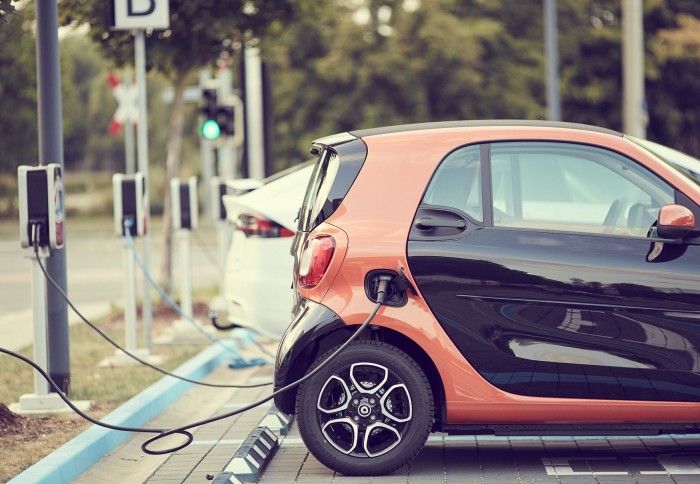Imperial academic gives evidence to Select Committee on batteries and fuel cells
by Gemma Ralton

According to Professor Magda Titirici, the UK has an opportunity to develop greener alternative materials for use in batteries and fuel cells.
Batteries and fuel cell technologies are becoming increasingly instrumental in the UK’s commitment to achieve net-zero greenhouse gas emissions by 2050. Particularly crucial in the transport sector, the number of battery-electric vehicles in the UK will need to increase from around 5% of current sales to 100% by 2032.
In an effort to investigate the role of battery and fuel cell technologies in the UK, the Science and Technology Committee held a session on the subject on Tuesday 25 May, with witness experts from the fields of earth sciences, inorganic materials chemistry and geology.
“The UK has a huge potential for manufacturing new materials for batteries, fuel cells and electrodes. It could move to different technology but source the other parts – electrolytes, binders and so on – from locally available supplies, making them greener.” Professor Magda Titirici Department of Chemical Engineering
Giving evidence to the Committee was Sustainable Energy Materials Chair, Professor Magda Titirici. She highlighted the current issues with the use of critical materials in battery production and outlined the UK’s opportunity for the development of greener alternatives.
Her current research interests involve sustainable materials with focus on carbon and carbon hybrids, avoidance of critical elements in renewable technologies and the development of truly sustainable clean energy storage.
During the Select Committee session, Professor Titirici highlighted the role of iridium in cell fuels and the associated challenges. She said: “In order to use fuel cells, we need hydrogen and electrolysers, and for that we need iridium which is a by-product of platinum extraction. Most of the platinum resources are in South Africa [and] Iridium is one of the elements that are very scarce… classified under low-volume availability.”
Other materials involved in the manufacturing of batteries and fuel cells include electrodes, binders, solvents and additives which currently present a number of challenges in the UK supply chain.
Addressing these challenges, Professor Titirici highlighted the “threefold problem”: how to access the minerals for lithium-ion batteries, how to recycle them, and how to produce locally sourced new materials for the UK.
She emphasised the present opportunity for the UK to produce new materials that are not based on critical materials, using locally available supply chains with the ability to diversify the battery market. Drawing on her research, Professor Titirici suggested alternative catalysts could be produced instead of platinum, using enzyme inspired materials and even catalysts made from biowaste.
She said: “The UK has a huge potential for manufacturing new materials for batteries, fuel cells and electrodes. It could move to different technology but source the other parts – electrolytes, binders and so on – from locally available supplies, making them greener.”
One example alternative is sodium ion batteries which do not require any critical elements and can be manufactured using existing infrastructure. Aluminium batteries would also be a suitable alternative due to its high abundance and recycling ability. However, further research and design is needed to try and accelerate the development of these new technologies before they can be implemented widely.
Watch the session in full on Parliament TV.
Article text (excluding photos or graphics) © Imperial College London.
Photos and graphics subject to third party copyright used with permission or © Imperial College London.
Reporter
Gemma Ralton
Faculty of Engineering